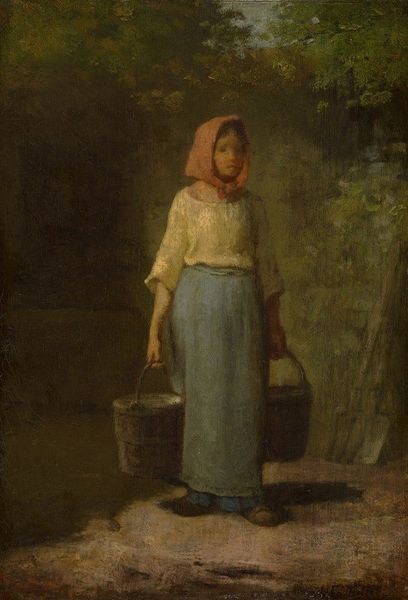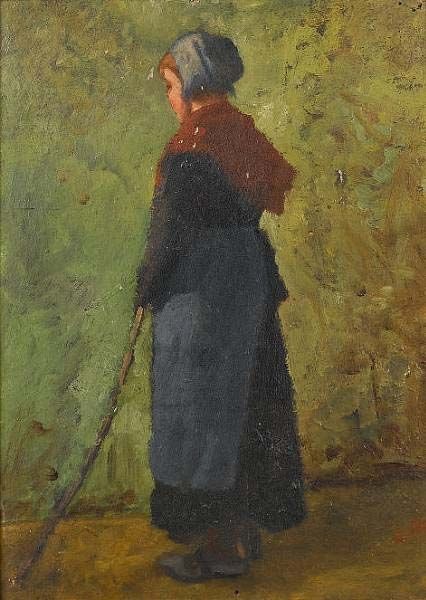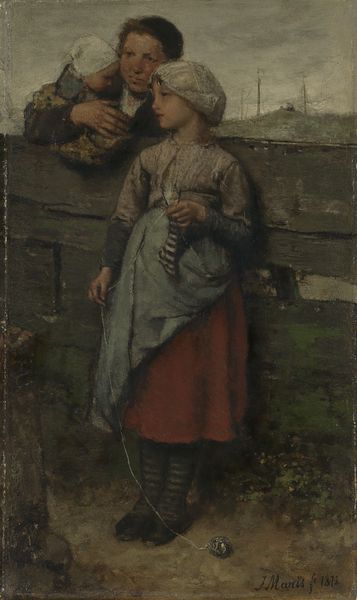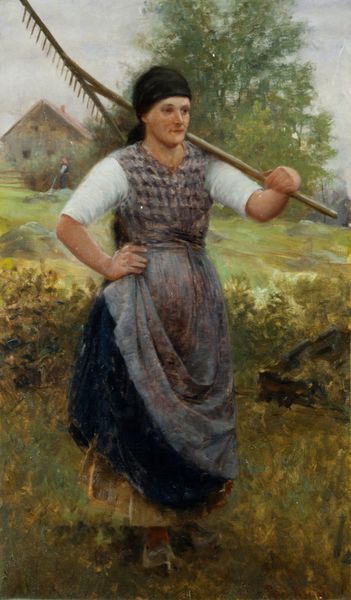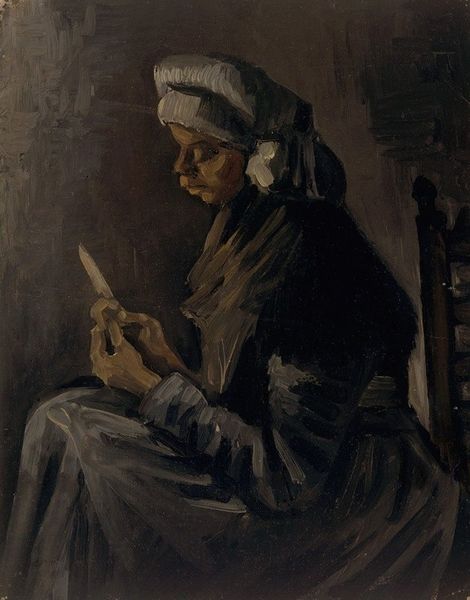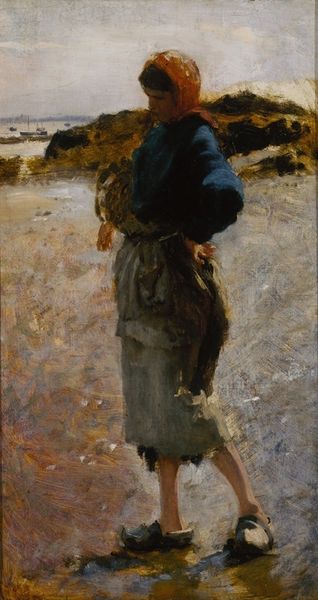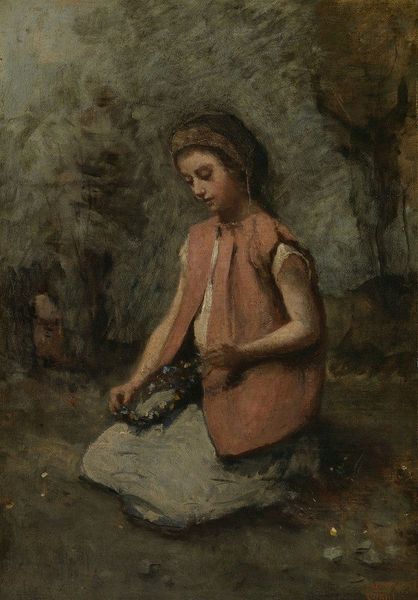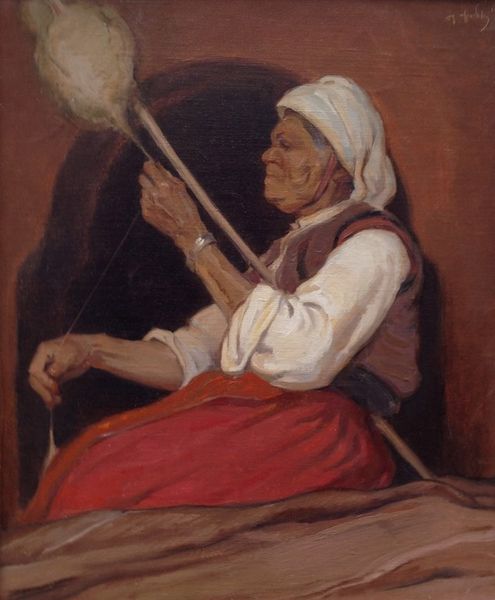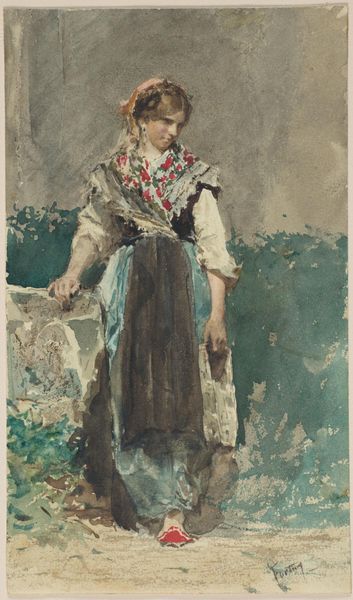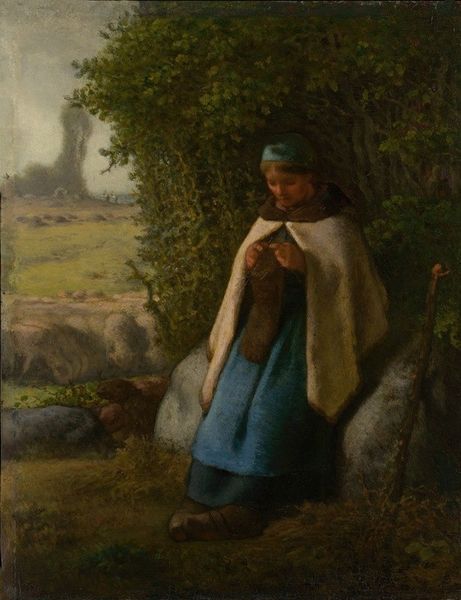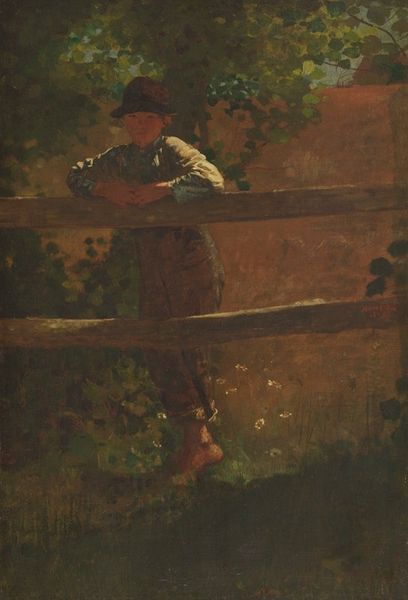
#
acrylic
#
abstract painting
#
charcoal drawing
#
painted
#
possibly oil pastel
#
oil painting
#
acrylic on canvas
#
underpainting
#
painting painterly
#
watercolor
Dimensions: height 35 cm, width 26.3 cm, height 38.8 cm, width 30.6 cm, depth 1.1 cm
Copyright: Rijks Museum: Open Domain
Editor: This is "A Peasant Woman with a Stick," painted in 1890 by Richard Nicolaüs Roland Holst, currently residing at the Rijksmuseum. It's striking how somber and grounded she appears, like a timeless figure. What draws your attention when you look at this painting? Curator: I see the persistence of archetypes, especially those connected to the land and labor. Notice how the woman's figure is rendered with a certain monumentality, even within the modest scale of the painting. The stick, of course, isn’t merely a prop. It represents a connection to the earth, to survival. Consider the enduring image of the peasant woman throughout art history – what stories, what collective memories, are woven into this depiction? Editor: So, it's not just a portrait of an individual but a symbol of something larger? Curator: Precisely. The muted palette, the almost devotional pose… these elements elevate the peasant woman to an icon. Look at the deliberate anonymity of her face, shadowed and indistinct. The painting isn’t about a specific woman but about Woman as Earth Mother, Woman as Laborer. Does the weight of generations, of tradition, feel palpable? Editor: I think so. It makes me wonder about the idealized versus the real experience of peasant women and what Roland Holst intended to convey. Curator: Indeed. Consider what symbols Holst chose to emphasize and what he omitted. What does that say about his cultural moment, his understanding of class, and his own artistic aspirations? It's a layered inquiry. Editor: I never considered how a seemingly straightforward image could carry so many cultural connotations. It changes how I perceive portraits from this period. Curator: That’s the power of iconography. Once you recognize the recurring symbols, the stories embedded in images begin to speak volumes.
Comments
No comments
Be the first to comment and join the conversation on the ultimate creative platform.
